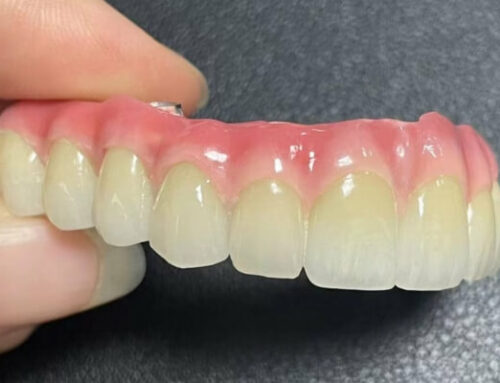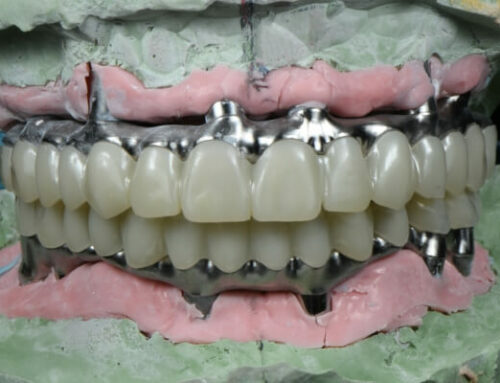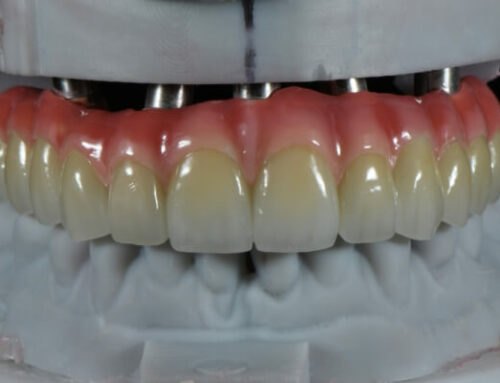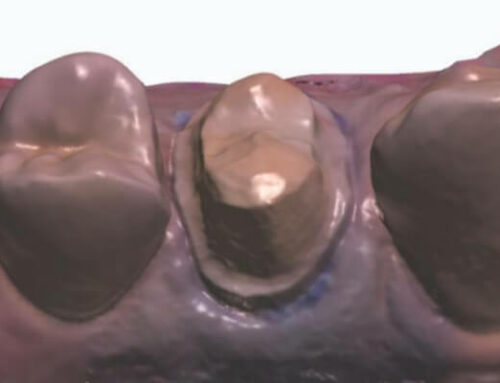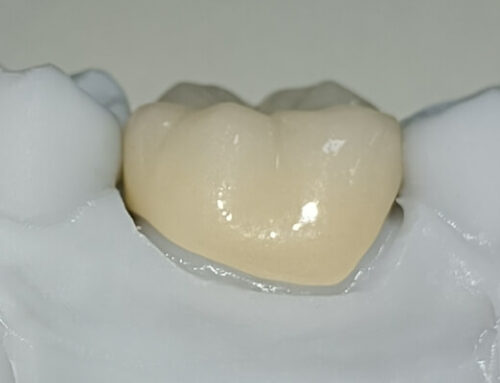Fit to dental partial is a common practice in dentistry, but many dentists are confused about steps for Fit-to-partial dental cases. Today we are going to share how to make a dental crown that can fit to an existing dental partial. So dentists can save time and cost.
1. Wrong way for Fit to partial
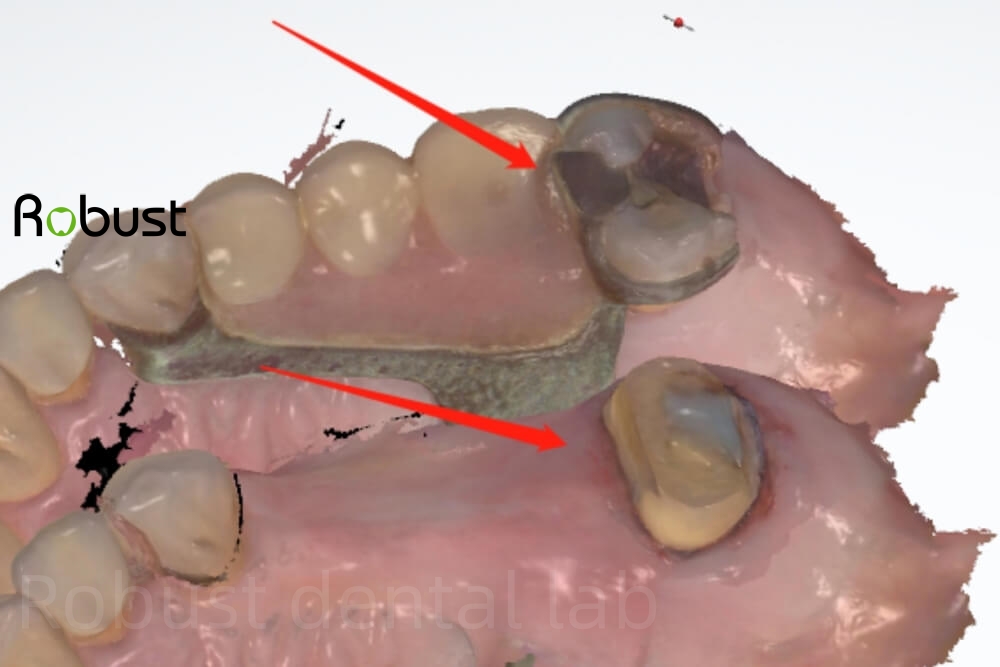
Let’s see a real case example. Our dental clinic sent 2 scans to us. One scan was with the partial in the patient’s mouth, while another scan was with a prepared tooth. The dentist asked us to 100% copy the patient’s original molar tooth, so the crown could fit to the her existing partial. Unfortunately, we could not help the dentist fit to partial, because the partial covered the natural tooth in the scan. In this case, we could only make a crown with our experience, so the dentist would have to make adjustments.
2. Correct way for Fit to partial
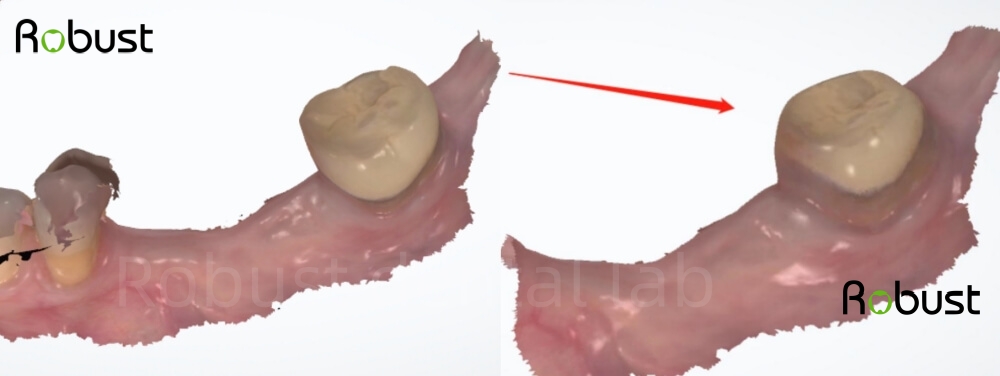
Right way for fit to partial dental cases
Now let’s look at another example. In the first scan (the left picture), the dentist took off the partial, and scanned the natural tooth. In the second scan, the dentist prepared the natural tooth, and scanned the prepared tooth. That was the correct way for Fit to partial cases.
3. Easy fit to partial
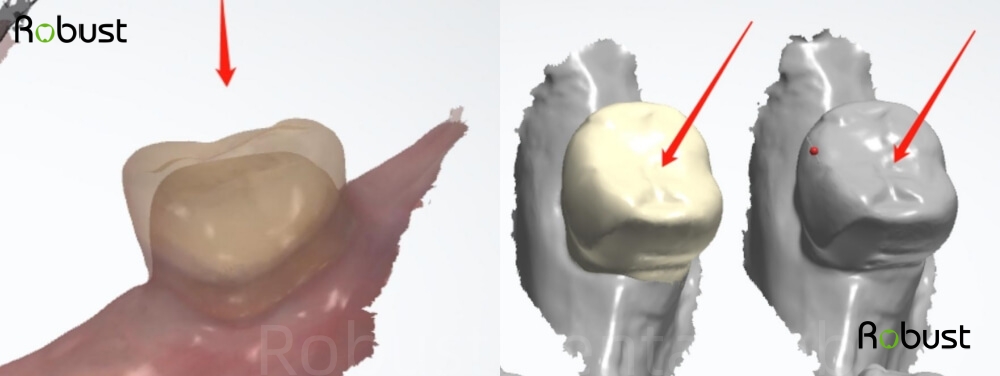
Completely copy natural tooth
On the software, we could compare the difference before and after preparation, and make a crown that would fully copy the natural tooth. In this case, the full zirconia crown could easily fit to the partial, and the dentist even would not have to make chairside adjustments.
This rule also applies to physical impressions. Dentists should take off the partial, and then take impressions. Second, dentists prepare teeth, and take a second impression. When we receive the 2 physical impressions, we can make a crown that will copy the natural tooth, and make Fit to partial easy and fast.
